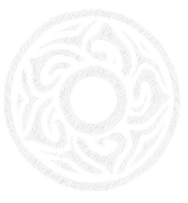Yuca(n) Do It All - Processing Yuca in Rural Costa Rica
By 2025 apprentice Maivy Xuân Nguyễn
At Rancho Mastatal, yuca is a staple in the kitchen and our bellies. You can find it in at least one of our meals nearly every day in one form or another. Yuca is also commonly known as cassava root or tapioca (in its powdered form). So, if you’ve ever had boba–a Taiwanese milk tea drink with chewy black pearls, or tapioca pudding, you’ve had yuca!
My affinity towards yuca grew rapidly during the past two weeks when we experienced a boon in our yuca supply! I already love yuca, having grown up on boba drinks which had taken its foothold in the San Francisco Bay Area while I was a child. It has since only grown in popularity. Tapioca starch is also a key ingredient in my favorite Vietnamese dish: bánh bột lọc. It’s one of the first dishes that my mom taught me how to make and I intend to find some time to make a Rancho Mastatal version in the future. Look out for upcoming blog posts—perhaps they will have some yummy recipes.
But, my appreciation of it has grown tenfold and beyond after having worked with it on so many levels.
We have planted, harvested, processed, cooked and eaten yuca. Each step has its own set of steps and we’ll get to those in future posts. For now, I’ll talk about processing and preparing yuca for cooking. Yuca must be cooked before we consume it because it does contain some toxins, especially in its skin, that will need to burn off. Plus, it is a hard and starchy root that would be difficult to enjoy raw.
The edible parts of yuca are their tuber roots and also their new baby leaves. There are actually some varieties of yuca where only the baby leaves are eaten because the rest of the plant contains too many toxins. Luckily, we have the sweet kind with delicious roots!
Processing
If you get your yuca from a store, it will have likely gotten a parafin wax treatment. This is to prevent oxidation of the tuber which happens quickly. You’ll want to wash and scrub that off first.
We got ours straight from the ground so our first step was to wash and scrub off the dirt.
Then, cut the tuber into sections.
Make a cut along the tuber and using a paring knife, spoon or your fingers, separate not just the papery skin, but also the thicker white skin from the tuber. The layer of white skin contains cyanide, so you'll want to be sure to get it all off. Sometimes the skin comes off easily with just some maneuvering and other times it is stubborn and you may just need to cut through it.
Once you have the peeled root, give it another rinse and process it further as you'd like. We chunked it and shredded it so it could be cooked for our brunch time fried yuca or hash. The raw yuca will last about a week in the fridge. I will turn black as it oxidizes so try to keep it in airtight containers.
We also made yuca flour by dehydrating the shredded yuca and then blitzing it in a blender or food processor.
To make yuca starch, soak your shredded yuca in water overnight. Then strain and squeeze out the solids and keep the water. The starches will have been released into the water. Let the starch settle to the bottom and then pour off the water once it’s separated. You’ll end up with some wet starch. You can then dehydrate the starch and break it up into powder.
If kept dry and airtight, yuca flour can last for up to a year.
Now you’ve got a few ways to process yuca!
Planting
During one of our earlier work parties in the agricultural systems, we remade two zone 1 garden beds and planted some yuca, among many other plants and veggies.
The method through which we planted the yuca was through cuttings.
Yuca tubers take about 8-12 months to mature. So the ones we planted then are not the ones that we harvested or processed these past weeks. The boom came from outside of the Rancho and from the wider community of Mastatal.
Harvesting
A neighboring farmer, Don Jaime, had been forced off a piece of land that he's been farming for the past 20+ years.
The first week, the apprentice crew just came to pick up the sacks of yuca that Don Jaime had harvested that day, the four sacks totaled to 103 kilos.
It wasn't until the next week, when we came to help harvest more of the yuca from that land, that we got to see the full extent of his work.
Want to Learn More?
Join us for one of our yearly Permaculture Design Courses to get theory and practice in growing your own food.















